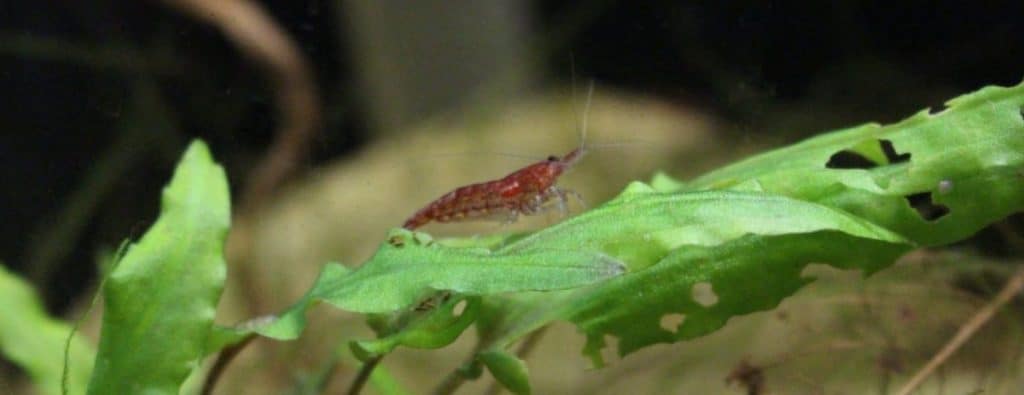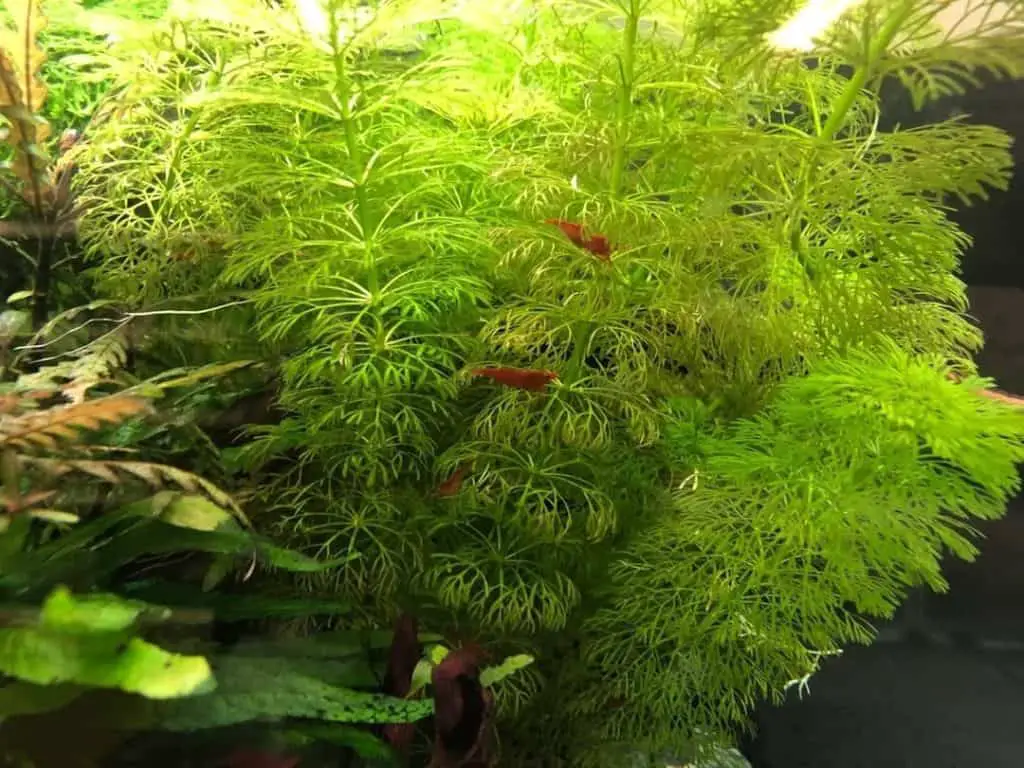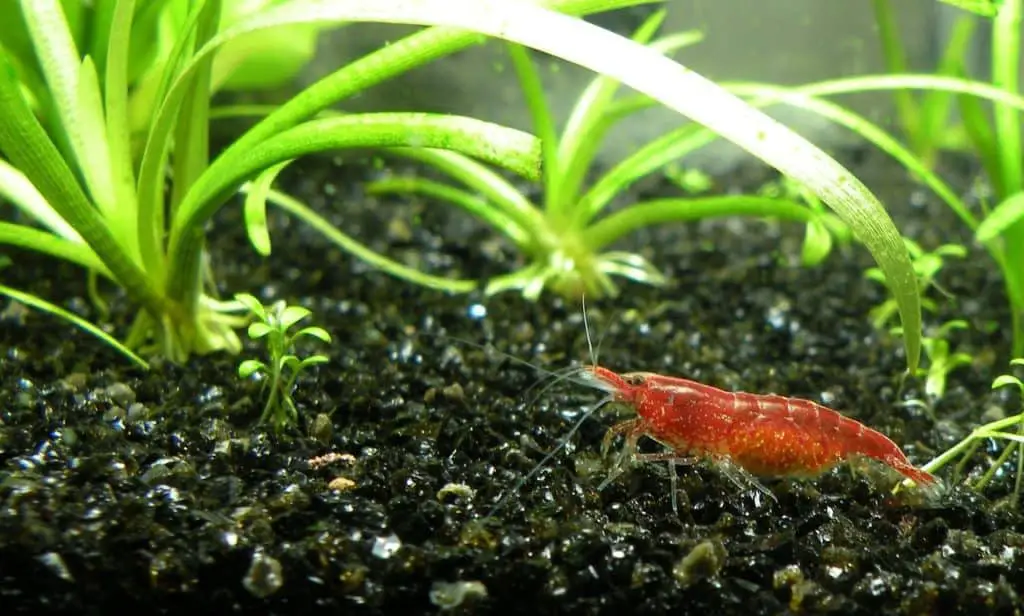Dive into the captivating world of Red Cherry Shrimp, the vibrant, low-maintenance aquatic pets ideal for beginners.
This guide provides invaluable insights into purchasing, setting up, and breeding these fascinating invertebrates.
It further discusses their lifespan, ideal tank conditions, mates, and diet, ensuring they flourish in your care.
Uncover the unique delight of owning these small but vibrant creatures, presenting a pet-keeping experience distinctly different and intriguing.
Let’s embark on this exciting journey together.
Key Takeaways
- Red cherry shrimp are low-maintenance pets, making them perfect for beginners, including children.
- When buying red cherry shrimp, choose reputable breeders or pet stores and carefully select tankmates to avoid predation.
- Provide a suitable habitat for red cherry shrimp with a planted tank, clean water, and proper temperature and pH levels.
- Red cherry shrimp breed rapidly, so consider available space and decide what to do with future generations of baby shrimp.
Understanding the Basics of Red Cherry Shrimp
Our current discussion aims to demystify Red Cherry Shrimp’s care basics, focusing on their ideal habitat requirements, breeding conditions, and lifespan to ensure a thriving shrimp community in your home aquarium.
Red Cherry Shrimp thrive in a water temperature range of 65°F to 85°F, with a pH of 6.5 to 8.0. They prefer planted tanks and use aquarium decorations and plants for exploration.
Breeding requires a warm temperature around 81°F to 82°F and a nutritionally balanced diet. These vibrant creatures live up to two years, maturing sexually at 30 days.
Proper care, a clean environment, and a well-maintained tank are paramount to their survival, ensuring they are a joy to keep while also serving as a beginner’s introduction to the world of aquatic pets.

The Steps to Successfully Purchase and Setup Your Red Cherry Shrimp
With careful consideration and proper planning, purchasing and setting up your Red Cherry Shrimp can be both an exciting journey and a rewarding experience in the world of aquatic pets. These vibrant creatures can bring color to your life by following specific guidelines.
Begin by choosing a reputable source for your shrimp purchase, ensuring they are healthy and well-cared for. A well-planted tank with clean, chlorine-free water is essential for their survival. The temperature should be maintained between 65°F and 85°F, with pH levels between 6.5 and 8.0.
Consider the addition of moss and aquarium-friendly decorations, providing a playground for your aquatic pets. Lastly, select tankmates wisely to prevent your shrimp from falling prey, ensuring a peaceful habitat.
Ideal Tankmates and Habitat for Red Cherry Shrimp
Although Red Cherry Shrimp can coexist peacefully with many other species, choosing their tankmates carefully is crucial to prevent predation and maintain a harmonious habitat. Ideal companions include small, non-aggressive fish such as tetras or guppies and other non-predatory invertebrates like snails.
It’s beneficial to provide a densely planted aquarium for hiding and breeding. The substrate should be dark to bring out their vibrant color. Regular water changes, consistent temperature, and pH levels must be maintained. Good water quality and a balanced diet of algae, plant matter, and commercial shrimp food will ensure their well-being.
A serene and well-planned habitat serves the shrimp and creates an aesthetically pleasing mini-ecosystem, enhancing our commitment to animal care and conservation.

Breeding Your Red Cherry Shrimp: What to Expect
Breeding your Red Cherry Shrimp can be an exciting experience, but it requires careful planning and understanding of their reproduction behavior. Successful breeding involves:
- Space Consideration: Provide enough space in the tank for the rapidly increasing shrimp population.
- Optimal Conditions: Maintain a water temperature of 81°F to 82°F, which is beneficial for breeding.
- Nutritious Diet: Feed a balanced diet of commercial shrimp food and fresh vegetables to ensure healthy offspring.
- Future Planning: Decide what to do with future generations of shrimp, whether selling or rehoming them.
Approaching the process with a servant’s heart ensures each shrimp receives the attention and care it deserves.
Breeding Red Cherry Shrimp is about increasing numbers and, enhancing the species, and contributing to their thriving existence.
The Lifespan and Growth Stages of Red Cherry Shrimp
Red Cherry Shrimp typically have a lifespan of two years, and they reach sexual maturity at just 30 days old, allowing for a rapid and fascinating observation of their growth stages. They do not have a larval stage, emerging fully formed from eggs. This swift development is a source of wonder, providing an interesting educational opportunity for those invested in their care.
Maintaining the appropriate water quality is crucial. The table below provides key points for successful shrimp care:
| Shrimp Care Aspect | Ideal Condition | Importance |
|---|---|---|
| Water Temperature | 65°F to 85°F | Ensures shrimp health |
| pH Level | 6.5 to 8.0 | Supports shrimp development |
| Cleanliness | Free of harmful chemicals | Prevents illness and premature death |
In essence, serving these creatures well means creating an environment conducive to their flourishing.
Extra Details on Red Cherry Shrimp Care
In addition to maintaining optimal water conditions, the care of Red Cherry Shrimp extends to providing a conducive environment with suitable decorations and live plants and ensuring a balanced diet. To achieve this, consider the following:
- Aquarium Decorations: Use aquarium-friendly decorations that offer hiding spots and mimic their natural habitat.
- Live Plants: Aquatic plants enhance the aquarium’s aesthetics and provide shelter and breeding grounds.
- Diet: A commercial shrimp and fresh vegetables diet ensures balanced nutrition.
- Tankmates Selection: Choose tankmates wisely to avoid predation.

Where to Buy and What to Look for When Purchasing Red Cherry Shrimp
Often, prospective owners of red cherry shrimp face challenges in identifying reliable sources and understanding the key factors to consider during purchase. Owning these delightful aquatic pets can be overwhelming, particularly for beginners. However, through careful research, purchasing your first red cherry shrimp can be a rewarding experience.
| Sources to Consider | Factors to Check |
|---|---|
| Local pet stores | Health and activity level |
| Reputable online breeders | Color and size |
| Aquarium societies | Tank conditions |
| Fellow hobbyists | Breeder’s reputation |
Frequently Asked Questions
What Specific Diseases Are Red Cherry Shrimp Prone to, and How Can They Be Prevented?
Red Cherry Shrimp can contract bacterial infections and parasitic infestations. Prevention includes maintaining clean water conditions, avoiding overfeeding, and quarantining new aquatic life before introducing them to the aquarium to stop disease spread.
Are There Any Special Lighting Requirements for Red Cherry Shrimp’s Habitat?
Red Cherry Shrimp do not require specific lighting conditions, but a standard aquarium light is beneficial for maintaining plant life. Moderate light encourages plant growth, which provides hiding spaces and food for the shrimp.
Can Red Cherry Shrimp Be Trained or Exhibit Any Unique Behaviors?
Red Cherry Shrimp cannot be trained in the traditional sense. However, they exhibit unique behaviors such as molting, foraging for food, and even changing colors to match their environment for camouflage purposes.
How Can One Differentiate Between Male and Female Red Cherry Shrimp?
In distinguishing between male and female Red Cherry Shrimp, females are typically larger, possess a deeper red coloration, and display a saddle shape behind the head, where eggs are stored, unlike their male counterparts.
What Are the Signs of Stress or Poor Health in Red Cherry Shrimp?
Signs of stress or poor health in red cherry shrimp include changes in color to a pale or white hue, lethargy, loss of appetite, erratic swimming, and a white ring near the shrimp’s head.
Conclusion
In conclusion, embarking on the Red Cherry Shrimp pet ownership journey can be rewarding. The vibrant hues of these captivating invertebrates can add color to any freshwater aquarium.
However, it’s not simply a drop in the ocean, as proper tank conditions, suitable mates, and an adequate diet are fundamental to their well-being.
Thus, with the proper knowledge and preparation, this exciting realm of aquatic pet ownership becomes accessible and enjoyable.
